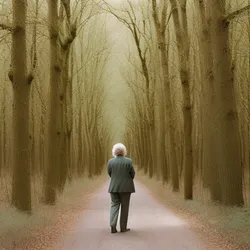
Level 1:
Why is the sky blue? The sky looks blue because of something called scattering. When sunlight enters the Earth’s atmosphere, it hits tiny air particles. Blue light gets scattered in all directions more than other colors, making the sky look blue to our eyes.
Level 2:
Ever wondered why the sky is blue? The blue color of the sky is caused by a phenomenon called Rayleigh scattering. Sunlight, which is white, is made up of different colors. As sunlight passes through the atmosphere, the shorter blue wavelengths scatter more than the other colors, spreading out in all directions. This scattering is why the sky appears blue to us during the day. At sunrise and sunset, the sky appears red or orange because the light has to travel through more atmosphere, scattering the shorter blue wavelengths away from our line of sight.
Full Story:
The Science Behind the Blue Sky
Have you ever asked, “Why is the sky blue?” Let’s break it down by looking at how light interacts with the atmosphere. Sunlight may appear white, but it actually contains all the colors of the rainbow: red, orange, yellow, green, blue, indigo, and violet. These colors correspond to different wavelengths of light, with blue and violet having the shortest wavelengths.
When sunlight enters Earth’s atmosphere, it collides with molecules of air, like nitrogen and oxygen. These tiny particles scatter the light in different directions. Blue light, which has a shorter wavelength, scatters more than red light, giving the sky its blue hue.
But why isn’t the sky violet, since violet light has an even shorter wavelength? This happens because our eyes are more sensitive to blue light than violet. Additionally, some of the violet light gets absorbed by the upper atmosphere. As a result, the sky appears predominantly blue to us.
The colors of the sky change throughout the day because of the way sunlight travels through the atmosphere. At sunrise and sunset, the sun’s rays pass through a thicker layer of the atmosphere, causing the blue light to scatter out of sight and allowing the longer wavelengths, like red and orange, to dominate.
Add that to the mix, and you’ll understand why the sky’s color can range from deep blue to pink or orange, depending on the time of day and the presence of particles like dust or moisture in the air.
So, the next time you gaze up at a clear, blue sky, remember it’s all about light waves, air particles, and scattering working together to create the beautiful scene above.
Questions:
Question: Why is the sky blue?
Answer: The sky appears blue due to Rayleigh scattering, where shorter blue wavelengths of sunlight scatter more than other colors when they pass through Earth’s atmosphere.
Question: What is Rayleigh scattering?
Answer: Rayleigh scattering is a phenomenon where light waves interact with small particles in the atmosphere, scattering shorter wavelengths (like blue) more than longer wavelengths.
Question: Why doesn’t the sky appear violet if violet light has shorter wavelengths than blue?
Answer: The sky doesn’t appear violet because our eyes are more sensitive to blue light, and some violet light gets absorbed by the upper atmosphere.
Question: Why does the sky change color at sunrise and sunset?
Answer: At sunrise and sunset, sunlight passes through a thicker layer of the atmosphere, scattering the blue light and allowing longer wavelengths like red and orange to dominate.
Question: What factors can affect the color of the sky?
Answer: Factors such as the angle of the sun, air particles, moisture, and pollution can affect the color of the sky, leading to variations like deeper blues or orange-red hues during sunrise and sunset.
Fill in the Blanks:
break it down, scatter the light, add that to the mix, light waves, air particles, and scattering
Let’s ________ by looking at how light interacts with the atmosphere.
Blue light ________ more than red light, giving the sky its blue hue.
________, and you’ll understand why the sky’s color can range from deep blue to pink or orange.
The blue sky is a result of ________ working together to create the scene above.
Difficult Words:
Rayleigh scattering - (noun) The scattering of light by particles in the atmosphere, causing shorter wavelengths like blue to scatter more than longer wavelengths.
Wavelength - (noun) The distance between successive peaks of a wave, determining the color of light.
Absorption - (noun) The process by which a substance takes in light energy, often leading to a decrease in light intensity.
Phenomenon - (noun) An observable fact or event, often in nature or science.




